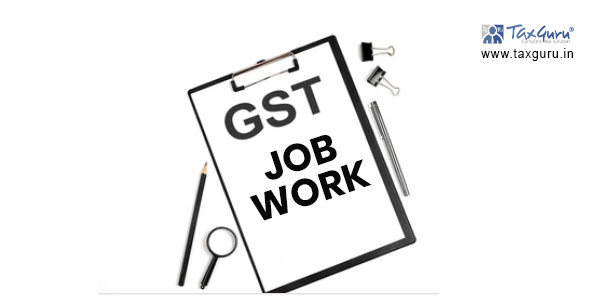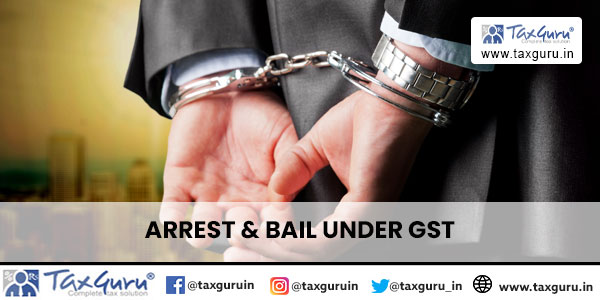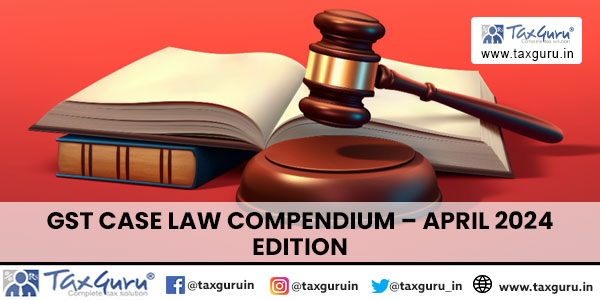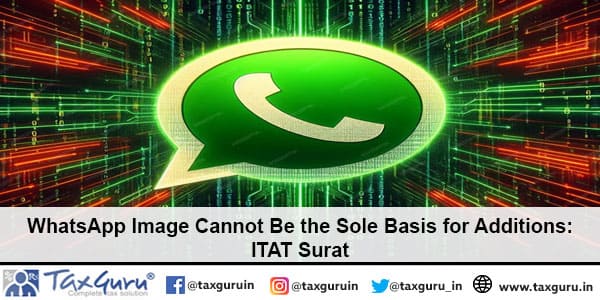Case Law Details
Diageo India Private Limited Vs. DCIT (ITAT Mumbai)- ITAT held that the contractor of bottling unit of the taxpayer and the overseas Diageo group entities are Associated Enterprises (AEs) and transaction entered between them are covered by the provisions of the Indian transfer pricing regulations. The Tribunal held that reference made by the AO to the TPO under Section 92 CA(3) of the Act, is transaction specific and not enterprise specific. The TPO has no powers to scrutinise transactions which have not been referred to him by the AO.
IN THE INCOME TAX APPELLATE TRIBUNAL
MUMBAI D BENCH, MUMBAI
ITA No. 8602/Mum/2010
Assessment year: 2006- 07
Diageo India Private Limited Vs. Deputy Commissioner of Income Tax
Date of hearing: June 07, 2011.
Date of pronouncement: September 05, 2011.
O R D E R
Per Pramod Kumar:
On the facts and in the circumstances of the case and in law, the learned Assessing Officer/Transfer Pricing Officer, based on the directions of the Dispute Resolution Panel,
1. erred in making transfer pricing adjustment of Rs 31.54 crores on account of advertising, marketing and promotion expenses alleged to have been incurred towards strengthening of the AE;
2. erred in making transfer pricing adjustment of Rs 1.20 crores on account of purchase of raw material from AEs by Konkan Agro Marine Industries Pvt Ltd;
3. erred in treating revenue expenditure of Rs 2,11,674 (net disallowance of Rs 84,670 after allowing depreciation @60%) incurred by the appellant on the software;
4. erred in holding that club expenses of Rs 54,807 have not been incurred by the appellant for the purpose of its business and thereby disallowing the same;
5. erred in not granting depreciation of Rs 2,90,780 on the tax written down value as on 1st April 2005, of the expenses incurred by the appellant on software and repairs to furniture, which were treated as capital expenditure by the learned AO in the earlier assessment years; and
6. erred in levying interest under section 234B of the Act of Rs 5,05,10,710 which is not in accordance with law.
| Heads |
Assessee’s Transactions (in crores) |
ALP as determined (in crores) |
| Sales (Constant) | 29.16 | 29.16 |
| Purchases | 28.82 | 27.63 |
| – from AEs (variable) | 4.50 | 3.31* |
| – from Non AEs | 24.32 | 24.32 |
| Operating profit/ loss | 0.33 | 1.53 |
| OP/Sales | 1.14% | 5.25% |
| (* Taken as the balancing figure) | ||
5. Accordingly, the TPO recommended an ALP adjustment of Rs 1.20 crores, in respect of the purchases of raw materials made by assessee’s contract bottler (i.e. Konkan Agro Marine Products Pvt Ltd) from the assessee’s associated enterprises. The Transfer Pricing Officer further noted that the difference between ALP determined by him vis-à-vis transaction value taken by the assessee is more than 5%, and, accordingly, adjustment contemplated in proviso to Section 92 C(2) is not admissible. The assessee’s objections at the assessment stage, as also before the Dispute Resolution Panel, did not fetch any relief to the assesse. The matter did not rest at this ALP adjustment in the purchases. The Transfer Pricing Office further noted that the assessee has incurred an expenditure of Rs 37.22 crores on account of sales promotion and advertising, which works out to 40.64% of entire turnover of Rs 91.58 crores. The TPO was of the view that the assessee has spent huge amounts on advertisement and sales promotion which pertain to the brands owned by the AEs, and the assessee has not received any compensation from its AEs for the brand promotion. He was of the view that “an independent enterprise, with a similar business model would expect an arm’s length reimbursement for doing brand promotion activities alongwith a mark up for performing these activities” since “increase in sales, of maintenance of sales at a particular level, would not generate so much of profit as to compensate the assessee for these expenses”. The Transfer Pricing Officer, accordingly, held as follows:
The assessee has incurred substantial advertising expenditure. This would result in creation of a marketing intangible. The value of the brand in the concerned markets would increase. This would benefit the owner of the brand. Suppose the owner subsequently decides to sell the brands, then it would sell the brand for these markets at a much higher premium. The assessee would not benefit from the same. It also indicates that the assessee may not be able to benefit from marketing and distribution expenditure it incurs at its own risk. The assessee has acted to increase the value of brand names owned by AE. AE should, therefore, have compensated the assessee for promoting this brand.
6. A reference was then made to the definition of international transaction which, according to the TPO, covers an arrangement, understanding or action in concert, (a) whether or not such arrangement, understanding or action is formal or in writing; or (b) whether or not such arrangement, understanding or action is intended to be enforceable by legal proceeding. The TPO observed that the transaction relating to brand promotion is thus clearly covered, as it would have bearing on profits, incomes, losses or assets of the assessee. The TPO then proceeded to compute how much advertisement expenses the assessee ought to have incurred, and, in doing so, he relied upon the highest advertisement expenses incurred by any of the comparable cases selected by the assessee for the purpose of computing ALP of purchases from AE. He noted that the highest advertisement expenditure incurred in these cases in by United Spirits Limited, which is 6.2% of sales, and the amount spent by the assessee in excess of this ratio was considered to be for the purposes of the associated enterprise owning the related brands. Accordingly, the TPO concluded that out of advertisement and sales promotion expenses incurred to the tune of Rs 37.22 crores, only the amount of Rs 5.68 crores can be said to be for the purposes of business of the assessee, and the balance amount of Rs 31.54 crores should have been reimbursed by the associated enterprises to the assessee. Accordingly, he disallowed Rs 31.54 crores and held it to be “Transfer pricing adjustment with reference to the contribution by the assessee towards the strengthening the brands owned by the AE”. Based on the report so given by the Transfer Pricing Officer, the Assessing Officer proceeded to disallow Rs 31.54 crores. The assessee filed his objection to this action of the Assessing Officer before the Dispute Resolution Panel, but the Dispute Resolution Panel, it does more often than not, rather summarily rejected the objections. The DRP, in a rather brief order, went on to observe that “moreover, the TPO has allowed highest possible percentage of advertisement expenditure, which is in the case of United Spirits, and thus resulting in maximum benefit to the assessee”. Aggrieved by these adjustments, of Rs 1.20 crores in respect of purchases by assessee’s contract bottling unit – namely Konkan Agro Marine Products Limited, and of Rs 31.54 crores in respect of, what the TPO has termed as, “contribution by the assessee towards the strengthening the brands owned by the AE”, the assessee is in appeal before us.
7. We have heard the rival contentions, perused the material on record and duly considered factual matrix of the case as also the applicable legal position.
8. As regards the arm’s length price adjustment in the purchases of raw material by assessee’s CBU, first objection of the assessee is that Konkan Agro Marine Industries Pvt Ltd, assesse’s contract bottling unit, is an unrelated party and, therefore, it cannot be treated as an associate enterprise of the assessee. As a corollary to this proposition, it is contended that the Assessing Officer erred in considering purchase of raw material by the said CBU from assessee’s AEs as international transactions with AEs of the assessee. Learned counsel has fairly stated that as a measure of abundant caution the assessee had disclosed these transactions in Form No. 3 CEB, but the mere fact that a transaction has been reported in Form No. 3 CEB cannot convert a transaction with independent enterprise into a transaction with associated enterprise. However, when learned counsel’s attention was drawn to the wide scope of definition of an AE under section 92A (1) (b) and deeming fiction under section 92A(2)(g), and it was put to him that the CBU was effectively controlled by Diageo group, though through the assessee as an intermediary, learned counsel submitted that there is nothing on record to suggest that the enterprises from which CBU has imported raw materials was covered by this deeming fiction. It is pointed out that the CBU has entered into arrangements from the assessee and, as a result of this association, the relationship as associated enterprises could at best be between the assessee and the CBU, and it does not extend beyond that. Learned Departmental Representative, on the other hand, relied upon the stand of the Assessing Officer and contended that what was being manufactured by the CBU was wholly dependent on the trademark being owned by the Diageo group, and on which the Diageo group had exclusive rights, the entities within the Diageo group are clearly covered by the scope of Section 92 A(1)(a) as also the deeming fiction set out in Section 92A(2)(g). It is thus submitted that assessee’s objection is devoid of legally sustainable merits. He further submitted that the definition of associated enterprises, under section 92 A(1), is comprehensive enough to cover the situations in which the assessee controls, directly or indirectly, the other enterprises. Learned Departmental Representative also referred to and relied upon the stand taken by the Dispute Resolution Panel in the order rejecting assessee’s objections in this regard.
9.Section 92 A of the Income Tax Act, 1961, which defines the expression ‘associated enterprises’, is reproduced below for ready reference:
Meaning of associated enterprise.
92A. (1) For the purposes of this section and sections 92, 92B, 92C, 92D, 92E and 92F, associated enterprise, in relation to another enterprise, means an enterprise
(a) which participates, directly or indirectly, or through one or more intermediaries, in the management or control or capital of the other enterprise; or
(b) in respect of which one or more persons who participate, directly or indirectly, or through one or more intermediaries, in its management or control or capital, are the same persons who participate, directly or indirectly, or through one or more intermediaries, in the management or control or capital of the other enterprise.
(2) For the purposes of sub-section (1), two enterprises shall be deemed to be associated enterprises if, at any time during the previous year,
(a) one enterprise holds, directly or indirectly, shares carrying not less than twenty-six per cent of the voting power in the other enterprise; or
(b) any person or enterprise holds, directly or indirectly, shares carrying not less than twenty-six per cent of the voting power in each of such enterprises; or
(c) a loan advanced by one enterprise to the other enterprise constitutes not less than fifty-one per cent of the book value of the total assets of the other enterprise; or
(d) one enterprise guarantees not less than ten per cent of the total borrowings of the other enterprise; or
(e) more than half of the board of directors or members of the governing board, or one or more executive directors or executive members of the governing board of one enterprise, are appointed by the other enterprise; or
(f) more than half of the directors or members of the governing board, or one or more of the executive directors or members of the governing board, of each of the two enterprises are appointed by the same person or persons; or
(g) the manufacture or processing of goods or articles or business carried out by one enterprise is wholly dependent on the use of know-how, patents, copyrights, trade-marks, licences, franchises or any other business or commercial rights of similar nature, or any data, documentation, drawing or specification relating to any patent, invention, model, design, secret formula or process, of which the other enterprise is the owner or in respect of which the other enterprise has exclusive rights; or
(h) ninety per cent or more of the raw materials and consumables required for the manufacture or processing of goods or articles carried out by one enterprise, are supplied by the otherenterprise, or by persons specified by the other enterprise, and the prices and other conditions relating to the supply are influenced by such other enterprise; or
(i) the goods or articles manufactured or processed by one enterprise, are sold to the other enterprise or to persons specified by the other enterprise, and the prices and other conditions relating thereto are influenced by such other enterprise; or
(j) where one enterprise is controlled by an individual, the other enterprise is also controlled by such individual or his relative or jointly by such individual and relative of such individual; or
(k) where one enterprise is controlled by a Hindu undivided family, the other enterprise is controlled by a member of such Hindu undivided family or by a relative of a member of such Hindu undivided family or jointly by such member and his relative; or
(l) where one enterprise is a firm, association of persons or body of individuals, the other enterprise holds not less than ten per cent interest in such firm, association of persons or body of individuals; or
(m) there exists between the two enterprises, any relationship of mutual interest, as may be prescribed.
10. We find that, in terms of the provisions of Section 92 A(1)(a), the expression ‘associated enterprises’ refers to an enterprises “which participates, directly or indirectly, or through one or more intermediaries, in the management or control or capital of the other enterprise”. The scope of ‘associated enterprises’ is expanded further by Section 92A(1)(b), taking into account group concerns, and it is provided that ‘associated enterprises’ covers an enterprise “in respect of which one or more persons who participate, directly or indirectly, or through one or more intermediaries, in its management or control or capital, are the same persons who participate, directly or indirectly, or through one or more intermediaries, in the management or control or capital of the other enterprise.” In effect, thus, when same persons participate, directly or indirectly or through an intermediary, in the management or control or capital of two or more enterprises, such enterprises are required to be treated as ‘associated enterprise’. Interestingly, even as definition of ‘associated enterprises’ has crucial references to ‘participation in management or control or capital’ at some places, the precise scope of this expression has not been defined under the provisions of the Income Tax Act, and it has not come up for judicial adjudication either. This expression has been used in Article 9(1) of OECD and UN model conventions, but we find no assistance from the OECD and UN commentaries either. All that the OECD commentary says on the scope of this expression is that it refers to “parent and subsidiary companies and companies under common control”. The true test of associated enterprise thus is control by one enterprise over the other, or control of two or more associated enterprises by a common interests, and such a control is essentially an effective control in decision making process.
11. In our considered view, therefore, the definition of associated enterprises in Section 92A(1)(a) and (b) is, what can be termed as, basic rule. In plain terms, the basic rule is that when one enterprise participates in the control or management or capital of the other enterprise (directly or indirectly or through one or more intermediaries) or when persons participating (directly or indirectly or through one or more intermediaries) in control or management or capital of two or more enterprise are the same, the enterprises are said to be associated enterprise. The expression used in the statute is ‘participation in control or management or capital’, but essentially all these three ingredients refer to de facto control on decision making. In terms of the basic rule thus, whether one enterprise controls the decision making of the other or whether decisions making of two or more enterprise are controlled by same interests, these enterprise are required to be treated as ‘associated enterprise’. Section 92A (2) gives practical illustrations of this kind of a control. All these illustrations deal with simple situations of dealing with two enterprise, as envisaged in Section 92A(1) (a), but these are equally good for application in situations involving more than two enterprise, as envisaged in Section 92A(1)(b). Section 92A(2)(e), for example, refers to a situation in which “more than half of the directors or members of the governing board, or one or more of the executive directors or members of the governing board, of each of the two enterprises are appointed by the same person or persons” but this deeming fiction is equally applicable when the same person appoints, say, more than half of the directors of the governing board for three or more enterprises. A literal interpretation to this clause will mean that if this relationship is between two enterprises, these two enterprises are required to be treated as ‘associated enterprises’ but when the same basis extends to more than two enterprises, these enterprises will not be associated enterprises. That is clearly an incongruous result. In our considered view, as all clauses of deeming fictions set out in Section 92A(2) are only illustration of the manner in which this de facto control on decision making exists, it is necessary that, while interpreting these deeming fictions, we interpret the same in such a manner as to make them workable rather than redundant (ut res magis valeat quam pereat), and that the same test of effective control on decision making as are implicit in deeming fiction under section 92(A)(2) we also apply to the situations of more than two associated enterprises envisaged in Section 92A(1)(b). In this light, let us analyse the situation before us. The manufacture of goods is carried out by the CBU Konkan Agro, which is controlled by the assessee inasmuch as the CBU is wholly dependent on the use of trade-marks in respect of which the assessee has exclusive rights. This relationship meets the test of de facto control on decision making as set out in Section 92A(2)(g). The assessee in turn, as evident from information in Form 3 CEB, is controlled, by way of equity participation, by Diageo PLC which also similarly controls other entities in the Diageo group, including the entities from which CBU has imported the raw materials. Diageo PLC thus , through the assessee as an intermediary, controls the CBU as also the Diageo group entities from which the CBU has imported raw materials. Clearly, therefore, the assessee, as also the CBU and its Diageo group supplier of raw materials are associated enterprises, and de facto all these enterprises are controlled, directly or indirectly or through intermediaries, by the same person i.e. Diageo PLC. In this view of the matter, as also bearing in mind entirety of the case, the relationship of AEs exist between the assessee, the CBU and Diego group entities from which raw materials were purchased by the CBU. In any case, since the costs of all the raw materials is picked up by the assessee, for all effective purposes, the transaction is actually between the assessee and the Diageo group concerns supplying the raw material to the CBU, and since the assessee as also these vendors are admittedly under the control of Diageo PLC, the transactions are clearly between the associated enterprises. The objection raised by the assessee to the effect that the transactions of imports of raw material by the CBU, i.e. Konkan Agro, from Diageo group entities cannot be treated as international transactions between the associated enterprises, therefore, is rejected.
12. Learned counsel’s second objection was that there is no need to look for the margins of profit outside assessee’s own operations, as the assessee was involved in the same line of business in two different business models – one segment in which purchases have been made from the associated enterprises (whiskey segment), and the other segment in which no purchases have been made from associated enterprises (OTW i.e. other than whiskey segment), but while the assessee has made a profit of 1.16% in the segment in which transactions have taken place with AEs, the assesse has incurred a loss of 4.93% in the segment in which no transactions have taken place with the AEs. Learned counsel that both these distinct segments of operations being in the same line of business, the best comparator of whiskey segment is other than whiskey segment in assessee’s own case, the results shown by the assessee in whiskey segment, showing better profitability than OTW segment, should be accepted. Learned counsel terms this comparability as application of ‘internal TNMM’. It is submitted that, for the simple reason that the assessee’s profitability in the same line of business in the segment in which he has had transactions with AEs is better than the profitability in the segment in which he had no transactions with the AEs, the impugned TNMM adjustment should be quashed.
Drinking patterns in India are unlike those of any other major market. Hard liquor is far more popular than beer and wine, with spirits accounting for about 70% of the market. Nearly all of that is whiskey — a legacy of the colonial fondness for Scotch. India is the largest whiskey market in the world, so American whiskey producers figure they’ve got a head start in India compared to other new markets. “Indians are preordained whiskey drinkers,” says Frank Coleman, senior vice president of the Distilled Spirits Council of the United States, a trade group for American spirits makers. “They’ve developed a taste for whiskey.”
Learned counsel submitted that when a high loss-making unit is to be ignored for the purpose of comparable to be taken into account for computation of mean profit, on the same logic, the company showing in such high profit as 138 per cent of operating profit to cost should also be excluded. It was submitted that as evident from financial statement of the said company and the disclosure made therein by way of notes to accounts, Data Matrix Technologies Ltd. had huge transactions with the associated enterprises. It was the case of the assessee that on account of these intra associated enterprises transactions, the comparability of Data Matrix Technologies Ltd. is also vitiated in law. Learned counsel did admit that Datamatics Technologies Ltd. was included in transfer pricing study given by the assessee himself but, according to him, it cannot be open to the Revenue authorities to blow hot and cold at the same time. In as much as once they exclude a high loss-making comparable they must also exclude a high profit-making company. According to the learned counsel for the assessee, when an authority is empowered to do something he has a corresponding duty to exercise such powers in a fair way when circumstances so justify or warrant. It was submitted that the powers of the CIT(A) are co-terminus to the powers of the AO and TPO and once the CIT (A) had all relevant details before him including the fact that Datamatics Technologies Ltd. had over 37 per cent intra associated transfer price transactions, it was the duty of the CIT(A) to exclude Datamatics Technologies Ltd. from the comparables. Learned counsel also submitted that all the relevant details are already on record in as much as relevant annual account of Datamatics Technologies Ltd. filed before the CIT(A), we must entertain these grievances of the assessee on merits.
17. Having taken note of the rival submissions and material on record, the Special Bench concluded as follows:
……on facts and circumstances of the case, we hold that taxpayer is not estopped from pointing out that Datamatics has wrongly been taken as comparable. While admitting additional ground of appeal raised by the assessee to require us to consider whether or not Datamatics should be included in the comparable, we make no comments on merit except observing that assessee from record has shown its prima facie case. Further claim may be examined by the AO. This course we adopt as objection to the inclusion of Datamatics as comparable has been raised now and not before Revenue authorities. Therefore, we deem it fit and proper to remit the matter to the file of the AO for consideration of claim of the taxpayer and make a de novo adjudication of the ALP after providing reasonable opportunity of being heard to the assessee. We order accordingly.
20. We, however, agree with the learned counsel’s submission that the Assessing Officer should have allowed adjustment of + 5% in terms of the proviso to Section 92 C. The question whether benefit of + 5% even when the variation in value of international transaction with AEs and its ALP is more than 5%, prior to amendment in second proviso to Section 92 C with effect from 1st October 2009, the issue is no longer res integra. In the case of ACIT Vs UE Trade Corporation India Pvt Ltd (44 SOT 457), a coordinate bench has taken the view that this amendment is only prospective, and that so far as pre 1st October 2009 position is concerned, the adjustment of 5% is to be allowed even in the cases where difference in value of international transactions and its ALP is more than 5%. We are in considered view of the views so articulated by the coordinate bench. Respectfully following the same, we uphold the grievance of the assessee and direct the Assessing Officer to grant a deduction of 5% in computation of arm’s length price, in accordance with the legal position elaborated upon by the coordinate bench.
23. As far as this adjustment is concerned, it is an undisputed position that the Assessing Officer had not made any reference to the Transfer Pricing Officer for ascertaining ALP in respect of advertising, marketing and promotion expenses alleged to have been incurred for brand strengthening of the brands owned by the AE. The question whether TPO can make adjustments in such a situation is squarely covered by a decision of the coordinate bench in the case of 3i Infotech Ltd Vs DCIT (136 TTJ 641) wherein coordinate bench has, inter alia, observed as follows:
38. .. Under the provisions of s. 92E, an assessee who has entered into an international transaction during a previous year has to obtain a report from an accountant and furnish such report in the prescribed form, i.e., Form No. 3CEB. Sec. 92C(3) provides as follows :
“(3) Where during the course of any proceeding for the assessment of income, the AO is, on the basis of material or information or document in his possession, of the opinion that—
(a) the price charged or paid in an international transaction has not been determined in accordance with sub-ss. (1) and (2); or
(b) any information and document relating to an international transaction have not been kept and maintained by the assessee in accordance with the provisions contained in sub-s. (1) of s. 92D and the rules made in this behalf; or
(c) the information or data used in computation of the ALP is not reliable or correct; or
(d) the assessee has failed to furnish, within the specified time, any information or document which he was required to furnish by a notice issued under sub-s. (3) of s. 92D,
the AO may proceed to determine the ALP in relation to the said international transaction in accordance with sub-ss. (1) and (2), on the basis of such material or information or document available with him : Provided that an opportunity shall be given by the AO by serving a notice calling upon the assessee to show cause, on a date and time to be specified in the notice, why the ALP should not be so determined on the basis of material or information or document in the possession of the AO.”
Sec. 92CA(1) to (3) empowers the AO to make a reference to the TPO and it reads as follows :
“92CA. Reference to TPO—(1) Where any person, being the assessee, has entered into an international transaction in any previous year, and the AO considers it necessary or expedient so to do, he may, with the previous approval of the CIT, refer the computation of the ALP in relation to the said international transaction under s. 92C to the TPO.
(2) Where a reference is made under sub-s. (1), the TPO shall serve a notice on the assessee requiring him to produce or cause to be produced on a date to be specified therein, any evidence on which the assessee may rely in support of the computation made by him of the ALP in relation to the international transaction referred to in sub-s. (1).
(3) On the date specified in the notice under sub-s. (2), or as soon thereafter as may be, after hearing such evidence as the assessee may produce, including any information or documents referred to in sub-s. (3) of s. 92D and after considering such evidence as the TPO may require on any specified points and after taking into account all relevant materials which he has gathered, the TPO shall, by order in writing, determine the ALP in relation to the international transaction in accordance with sub-s. (3) of s. 92C and send a copy of his order to the AO and to the assessee.”
In the present case, the AO referred to the TPO for determination of ALP the transactions set out in Form No. 3CEB by his letter dt. 29th Sept., 2003. The details of these transactions have already been set out above in the earlier paras. The transaction by which the assessee deputed three of its employees to ICICI Infotech, USA, was not considered as an international transaction to be set out in Form No. 3CEB by the assessee. The AO therefore never referred the computation of ALP to the TPO the transaction of deputation of three of its employees by the assessee to ICICI Info tech, USA. The jurisdiction of the TPO is therefore restricted to the transactions referred to him by the AO under s. 92CA(1). The TPO therefore could not under s. 92CA(3) determine the ALP in relation to an international transaction not referred to him by the AO under s. 92CA(1). In this regard Instruction No. 3 of 2003, dt. 20th May, 2003 issued by the CBDT regarding computation of income from international transaction having regard to ALP, is very clear. In the said instructions, the CBDT explaining the role of TPO has instructed that in terms of s. 92CA of the Act, the TPO’s role is limited to the determination of ALP in relation to the international transactions referred to him by the AO and if during the course of proceedings before him it is found that there are certain other transactions which have not been referred to him by the AO, he will have to take up the matter with the AO so that a fresh reference is received with regard to such transaction. The Board has further opined that reference to the TPO is transaction specific and not enterprise specific. In the present case, the determination of ALP in respect of the transaction by which the assessee deputed three of its employees to ICICI Infotech, USA, by the TPO is therefore non est to that extent and cannot form the basis for making an addition to the total income. The AO therefore could not have made the impugned addition on the basis of the order of the TPO. Since the impugned addition has been made by the AO only by placing reliance on the report of the TPO, the addition cannot be sustained.
32. In ground no. 5, grievance of the assessee is that the Assessing Officer erred in disallowing the depreciation of Rs 2,90,780. However, we find that the Assessing Officer has made the impugned disallowance as the assessee could not furnish necessary details for verification, and has further observed that as and when assessee is able to produce the relevant details, the claim will be entertained on merits. In this view of the matter, no interference is really called for in well reasoned approach of the Assessing Officer.
33. Ground No. 5 is thus dismissed.
34. Ground No. 6 against levy of interest under section 234 B seeks only consequential relief. It does not therefore call for any adjudication, beyond directing the Assessing Officer to give consequential relief. Ground No. 6 is thus dismissed subject to the directions for consequential relief.
35. In the result, the appeal is partly allowed in the terms indicated above.
Pronounced in the open court today on 5th day of September, 2011.




















ACCORDING TO THE SCHEME OF THE RELATED PROVISIONS, ONE ENTITY IS CONSIDERED AN ‘ASSICIATE ENTERPRISE’ OF ANOTHER, PROVIDED THERE IS SOME RELATIONSHIP BETWEEN THE TWO, WHICH IS OF THE NATURE AS ENVISAGED. THAT IS SEEN TO BE SO EVEN UNDER THE DEEMING PROVISION, TO PUT IT DIFFERENTLY, THE SCHEME COMES INTO PLAY ONLY IF THE 2 PARTIES ARE ‘RELATED’ WITHIN THE MEANIONG OF THE ASCHEME; NOT IF ‘UNRELATED’,
EVEN IN THE REPORTED CASE, THE FACTUAL POSITIION SEEMS TO BE SO. PROCEEDING ON THAT PREMISE, ONE FAILS TO SEE
THE CORRECTNESS OF THE IMPORT OF THE TERM ‘UNRELATED’ APPEARING IN THE TITLE OF THE WRITE-UP.